 |
Frank Allyn Benitz | Page last modified: |

Frank Allyn Benitz
(Source: James Bell,
Colored by C.J. Seeger, 2023)
Click here to view original.
 |
Frank Allyn Benitz | Page last modified: |

Frank Allyn Benitz
(Source: James Bell,
Colored by C.J. Seeger, 2023)
Click here to view original.
Frank Allyn Benitz was born on 25 May, 1893. His birth was registered (as Francisco Allyn Benitz) in Gualeguaychú, Entre Rios, Argentina, though he was most likely born on the estancia (ranch) that his father managed for the Bunge family in the vicinity of Rincón de Landa — a port on the Uruguay river 7 leagues south of Gualeguaychú. Frank was the sixth child and second son of William Otto Benitz and Clara Electa Allyn. Both his parents were from the U.S.: William emigrated in 1874, from Oakland, California; Clara arrived in 1879 as a school-teacher, from Rochester, Minnesota.
In 1897, when Frank was four years old, Clara took her family to live in Winona, Minnesota, close to her older sister Franc (a school-teacher, married to a well-established jeweler, Stephen Morgan). Frank’s youngest sister, Marion, was born there in August, 1897. Then in June 1899, his parents returned to “La California”, the estancia (ranch) founded in 1875 by Frank’s grandfather, Wilhelm Benitz. Located near present day Las Rosas, Santa Fé, it is where Frank spent his early childhood until 1907 when he was sent to school in England.
Why Willie and Frank were sent to school in the U.K. is a puzzle. Why not the U.S.? Both their parents were from the U.S., and Clara’s sister Franc (a school-teacher) could have taken care of them, like she was doing for their sisters. However, having assimilated into the English speaking Anglo-Argentine community, it is possible their parents looked upon the British boarding schools as the proper place to send their sons. How the schools were chosen is another puzzle: Willie was sent to Merchiston Castle (Edinburgh, Scotland) and Frank to Malvern College (Malvern, Worcestershire, England). Two of Frank’s first cousins, John & Alfred D. Benitz, followed him to Malvern.
NOTE: The following account is 99% the work of “Sam in Retford”, WW-I historian, Retford, Nottinghamshire, England. Sam is so much more knowledgeable than ourselves regarding the history of the RAF at Retford, that we are using his account almost verbatim. Most of the few changes we have made are the addition of more family photographs, and redirecting credits attributed to us to our original sources.
In addition, search the web for more about any aspect of the Great War (WW-I); it is thoroughly documented: training, equipment, aerodromes, and aircraft including clips of flying replicas.
1907 — 1910 (The Malvernian,
1912-1920, p.637)
Educated at Malvern College, Malvern, Worcestershire. The following is his entry in The Malvernian:
“Frank Allyn Benitz (No.3, 1907-10). Lower IV — Middle IVB. University of Illinois. Farmer.
“Lieut. R.A.F.; accidentally killed August 5.
“Frankie Benitz was one of those boys who win popularity from an infectious keenness to be always doing their utmost. He loved Malvern, and has never lost touch with it, nor can his many friendships here ever be forgotten. Flying is exactly what would appeal to him, but it was not for that alone that he hastened back from the Argentine: he knew what he owed to England, and he put himself where he could best serve her. Unfortunately a thick mist deprived her of a first-class airman.”
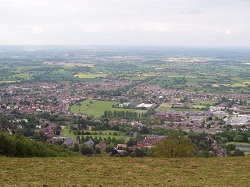
Malvern from Malvern Hill |

House No.3 |
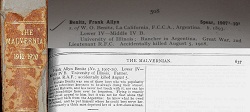
Frank’s entries More? Search on “Malvern College uk” or click: here for its website. |
8 March 1911 — 4 April 1911 (New York Port Authority Passenger Manifest)
Arrived in New York, as a first class / saloon passenger, from Buenos Aires on
S.S. Verdi (Listed as an “Alien Passenger”, i.e. non-U.S. citizen). He was on his way to
visit his ailing father in Corsicana, Texas. However, his father had already died, on 1 April, 1911.
1911 — 1913 (University of Illinois at Urbana-Champaign, Alumni Service)
Same as his older brother William, Frank attended the College of Agriculture at the University of Illinois, Urbana-Champaign, U.S.A
(class of 1915); and, like Willie, it appears he left early and did not graduate - see note.
[NOTE 1: The proposed column name list of Illini who died in the War, as published in the Memorial Stadium pledge prospectus of 1921 (“The Story of the Stadium”) lists Frank as “Class of ’15.” See photograph below for present day example of finished columns.]
[NOTE 2: It is likely Willie and Frank attended the U. of I. College of Agriculture because Dr. Mumford, dean of that school, had visited their uncle John’s estancia “Los Algarrobos” in April, 1908. They were the first of three generations of Benitz to attend the U. of I. College of Agriculture.]
29 May 1912 (The Courier Herald / Urbana Daily Courier)
Apparently, Frank toured Europe on motorcycle during the summer of 1912,
between his freshman and sophomore years; leaving from Boston on June 18, and arriving back in New York on September 15 (see
next); his companion, L.A. Kimball, returned earlier on the SS
Mauretania, arriving back in New York on September 6. (Sadly, so
far no letter or card has come to light about his trip.)
15 September 1912 (New York Port Authority Passenger Manifest)
Arrived in New York on S.S. Caledonia from Glasgow (departed 7 Sept.) with a final destination of
“Champaign University”. The Immigration Authorities now listed him as a U.S. Citizen
(annotated that his father was born at Fort Ross, California) [NOTE:This listing as a U.S. Citizen shows he
held dual-Argentine/U.S. citizenship.]
25 October, 1912 (Daily Illini, Univ. of Illinois)
Frank, class of 1915, pledged (joined) the Alpha Gamma Rho (ΑΓΡ - AGR) agriculture fraternity.
14 March, 1917 (Libro de Actas - Offical Record )
Frank qualified as a Pilot Aviator with Brevet Nº 105, one
of the first 200 Argentines to obtain a license recognized nationally and internationally.
He trained at the aerodrome in San Fernando (north of Buenos Aires), and was tested on
a Farman Gnôme (a.k.a.: Farman III), a boxkite with a 50 h.p. pusher engine. His
instructor, Jarfelt Paillette, later became a French fighter pilot.
[NOTE : Today, the aerodrome is an airport for small aircraft and San Fernando is a northern suburb of greater Buenos Aires. ]
3 May 1917 (Falmouth Port Passenger Manifest)
Arrived, 2nd class, from La Plata, Argentina at Falmouth, Cornwall (south-west coast), on the Royal Mail Steam
Packet Company’s S.S. Deseado (annotated as an Argentine citizen) Address in
U.K. given as: Edgecombe [sic] Hall, Beaumont Rd., Wimbledon
[NOTE: The U.K. address is that of Mr. Richard Agar, of Agar Cross Ltd. His wife was Bernice Avery, a childhood friend and fellow teacher of Frank’s mother, Clara E. Allyn. The Agar’s had married at “La California”, he was also a business associate of Frank’s uncle John, and his company was a well known farm supply & implement company in Argentina.]
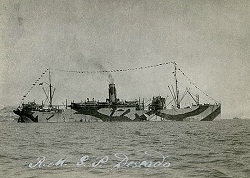
RMSP Deseado |
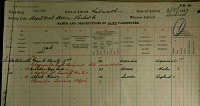
Frank’s arrival |
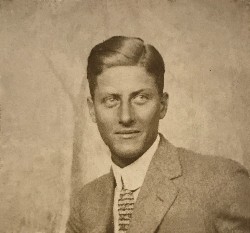
Frank - ca.1917 |
6 June 1917 (Service Record, AIR/76/ 34)
Joined the Royal Flying Corps at Farnborough (south-west of London, site of
today’s Farnborough Air Show)
20 June 1917 (Service Record, AIR/76/ 34)
Posted to No.1 Officer Cadet Wing. Annotated on Service Record, AIR/76/34,
“Knowledge of Spanish” with an occupation given as “Rancher” employed by
himself
10 August 1917 (Service Record, AIR/76/ 34)
Posted to No.2 School of Aeronautics,
Oxford
30 August 1917 (Service Record, AIR/76/ 34)
Posted to No.4 F.B. (Northolt?)
13 September 1917 (The London Gazette, No. 30327, p.10394, 9 October 1917)
War Office, 9th October 1917
Regular Forces
The undermentioned cadets to be temp. 2nd Lts. (on prob.):—
General List (R.F.C.), 13 Sept. 1917
Frank Allen Benitz (sic)
6 October 1917 (Service Record, AIR/76/ 34)
Posted to 199 (Depôt) Squadron, East Retford
[NOTE re 199 Squadron: Located at East Retford Aerodrome as part of 6th Brigade's (Night) Training Squadron School, Midland Area, and under 48th Wing (Home Defence), 199 Squadron was initially formed as No.99 (Depôt) Squadron on 1st June 1917 at Rochford Aerodrome to train pilots intended for service with night flying squadrons serving in France. On 23rd June 1917 the Squadron moved to East Retford Aerodrome, where on 27th June 1917 it was re-designated as No.199 (Depôt) Squadron. Progressive training was carried out using Henri Farman F.20’s (A Flight), the De-Havilland 1 (B Flight) and FE2b’s (C Flight). As part of the course they had to complete one hour’s night flying and five night landings, a course of firing Le Prieur rockets at a target of a Zeppelin marked out on the ground, and fire at toy balloons from an aeroplane with a Lewis gun before being qualified as a night pilot. Upon successful completion of that training stage, pupils were then posted either to an HD squadron for final training as Home Defence operational pilots, or to 192 (Night) Training Squadron at Newmarket for finishing as night bombing pilots or operational pilots. On the 21st December 1917 the squadron was once again re-designated, this time as No.199 (Night) Training Squadron. A final move from the by now re-named R.A.F. Retford to R.A.F. Harpswell in Lincolnshire, was made on 26th June 1918 where its role as a Night Training Squadron continued until being disbanded there in June 1919.]
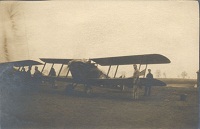
Frank |
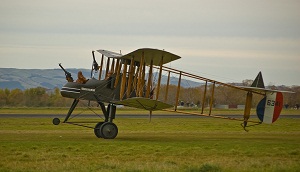
FE2b (replica) |
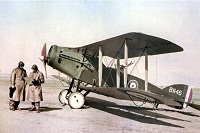
Bristol F.2B Fighter (For video of it flying, search for: |
19 December 1917 (The London Gazette, No. 30475, p.809, 14 January 1918)
War Office, 14th January 1918
Regular Forces, Royal Flying Corps, Mil. Wing.—
The undermentioned appointments are made:—
Flying Officers.—
Temp. 2nd Lts. (on prob.), Gen. List, and to be confirmed in their rank:—
19th Dec. 1917
F. A. Benitz
19 December 1917 (Casualty Card, F.S. Form 559)
Posted to No.33 Squadron
[NOTE: No.33 Squadron was formed at Filton on 12 January 1916, from a nucleus left behind when No.12 Squadron moved to France. In March it moved to Yorkshire as a Home Defence unit to defend the industrial areas of the North Midlands against attacks by enemy airships. For the first three months No.33 was also committed to training pilots by day but was relieved of this task by No.57 Squadron and for the rest of the war was engaged in night patrols. The slow BEs were replaced by more suitable FEs in November 1916 and when the home defence squadrons were modernised in 1918, No.33 received some Bristol Fighters in June and, in August, Avro 504Ks adapted as night fighters. Despite numerous patrols, no successful interceptions were made and the Squadron disbanded on 13 June 1919. It reformed at Netheravon as a day bomber Squadron on 1 March 1929.
Bases: Filton, Coal Aston (D), 12 January 1916; Bramham Moor, 18 March 1916; Gainsborough (H.Q. only), Scampton (A Flight), Kirton-Lindsey (B Flight), Elsham (C Flight) 3 October 1916; Kirton Lindsey 12 June 1918; Harpswell, 2 June 1919 to 13 June 1919.]
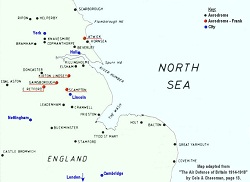
East Coast Aerodromes
England, 1914-1918
(Frank’s in red)
(Source: Adapted by P. Benitz)
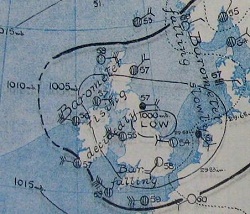
Weather: 6 Aug., 1918, at 7 a.m.
(Source: National Meteorological Archive
Sowton, Exeter, UK)
12 March 1918 (abridged from The Air Defence of Britain 1914–1918 by Cole & Cheesman)
On the evening of Tuesday, 12 March 1918, German Zeppelins L53, L54, L61, L62 and L63 set out to raid the Midlands.
In response Home Defence launched 9 Royal Flying Corps aircraft from 6 airfields.
At 20:29 2nd Lieutenant F. A. Benitz of A Flight, 33 (HD) Squadron — flying an FE2b, number A5660 — took off from Scampton. Encountering heavy cloud at 150 feet, he returned to base at 20:40.
The thick cloud also affected the Zeppelins, only one person was killed on the ground.
[NOTE: 1 April, 1918: The RAF (Royal Air Force) was formed by amalgamation of the RFC (Royal Flying Corps) and RNAS (Royal Navy Air Service).]
1 April 1918 (The Air Force List, April 1918)
Column 402
General Lists, Lieutenants
Benitz, FA A. & S. 1 Apr.18
Column 1206
Aeroplane and Seaplane Officers, Lieutenants
Benitz, F.A. 1 Apr.18
1 April 1918 (Service Record, AIR/76/ 34)
Posted to B Flight, 33 (HD) Squadron, Kirton-Lindsey, headquartered at
Gainsborough, part of 48th Wing, 6th Brigade, then to 39 H.Q. Squadron.
[NOTE: Annotated on Service Record, AIR/76/34, “Since joining R.F.C. flown:—DH1, FE2b, FE2d, BE2 & BE12”.]
5/6 August 1918 (abridged from The Air Defence of Britain 1914–1918 by Cole & Cheesman, & East Riding Airfields 1915-1920 by Geoffrey Simmons)
On the evening of Monday, 5 August 1918, German Zeppelins L53, L56, L63, L65 and L70 set out on the last raid of the war. Their target was the Midlands.
In response Home Defence launched 33 Royal Air Force aircraft from 14 airfields, with the U.S. Navy adding an F2a from Killingholme.
At 22:37 Lieutenant F. A. Benitz of A Flight, 33 (HD) Squadron — flying a Bristol Fighter, number C4698 — took off from Scampton accompanied by his gunner, Lieutenant H. Lloyd-Williams. They soon returned at 22:50 with petrol pressure trouble. The problem was quickly dealt with and Benitz took off again 20 minutes later at 23:10.
At 00:55 he was killed in a crash on the beach at Atwick, after failing to reach the nearby landing ground, his gunner was badly injured. Records show no reason for the diversion to Atwick, although other aircraft operating that night landed at airfields up to 110 miles from their originating base.
Two Royal Air Force aircraft did not return from this mission and were reported missing. There were no casualties on the ground as a result of bombing and Germany’s latest Zeppelin (L70) was attacked while still over the sea and destroyed, resulting in the death of all those on board.
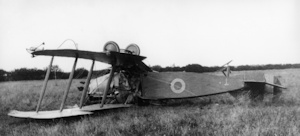
Frank's Bristol F.2b C4698
After fatal crash night of 5/6 August, 1918.
The engine is pushed back upon the pilot.
(Source: RAF Museum, London - ©RAF Museum)[NOTE 1: The crash at Atwick may have been compounded, or even caused by, sea mist at this probably unfamiliar coastal airfield. The Malvernian entry for Frank, detailed above, contains the following: “Unfortunately a thick mist deprived her of a first-class airman.” ]
[NOTE 2: The following is correspondence from Stuart Hadaway, the Assistant Curator, Department of Research and Information Services, R.A.F. Museum, London received by the Benitz family. It appears to have been drawn primarily from his Service Record (AIR/76/34), Casualty Card (F.S. Form 559) and Next of Kin Card (F.S. Form 557), although relationships, dates, and originating station given by him conflict with other sources:
“Lt Frank Benitz was a member of 33 Squadron, a home defence night fighter squadron based at R.A.F. Kirton Lindsey (Lincolnshire). On the night of the 4/5th August 1918 he had been on patrol in a Bristol Fighter, looking for German bombers which were carrying out a raid. On landing he misjudged his height in the dark and crashed. He was killed on impact (and, because he had been on a patrol, listed as killed in battle) and his observer, 2/Lt H L Williams, was seriously injured. His next of kin was originally recorded as his brother, W. A. Benitz, at the address shown on Lt. Benitz’s grave. This has been crossed out and his father, C. E. Benitz, c/o Messrs. Agar Cross Ltd. of Regent Street .. entered.” ]
[Clarifications to NOTE 2: (i) C. E. Benitz is Clara Electa Benitz, Frank’s mother. (ii) Agar Cross Ltd. - see above notes for 3 May, 1917. (iii) 2/Lt H L Williams (surname: Lloyd-Williams, given name reported as: Wynne or H.), was promoted to Lt on 28 Sept., 1918 , i.e. he recovered after the accident.]
[NOTE 3: When Frank misjudged his height and crashed, he was 70 miles from his base, likely lost and low in fuel for he did not head for a nearby landing ground (Atwick) but instead attempted to land on an unfamiliar and unlit beach or field (per photo above). He had much to contend with; it was a dark moonless night (per NASA tables) and visibility was poor — it was clouded, possibly raining, and the ground was likely obscured by mist. Frank made it back to land; however, that same night 2 other aircraft (4 crew members) vanished over the North sea.]
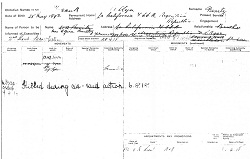
|

Frank’s Service Record |

|
15 August 1918 (Flight magazine, Volume X, Issue 503, 15 August 1918, p.920)
PERSONALS, Casualties
Lieut. FRANK ALLYN BENITZ, R.A.F., who was killed in
action on August 5th, aged 25, was the second son of the late Wm. O. Benitz and
Mrs. Benitz, Estancia “La California,” Santa Fé, Argentine.
National Probate Calendar 1919 (Index of Wills and Administrations, 1919, p.240)
The following is Frank’s entry from the Probate Registry records of 1919:
BENITZ Frank Allyn of Edgcombe [sic] Hall William Park Surrey lieutenant R.A.F. died 6 August 1918 at Atwick Yorkshire Administration (with Will limited) London 14 January to Marion Winona Benitz attorney of Clara Benitz.
Effects £127 3s. 2d.[NOTE 1: Atwick is approximately 10 miles north of Skirlaugh, the district where Frank’s death was registered and recorded in Volume 9d, page 371.]
[NOTE 2: Marion Winona Benitz (born in Winona, Minnesota), was Frank’s youngest sister. Clara Benitz was his mother.]
Final Resting Place & Memorials
Frank is buried at Gainsborough’s General Cemetery, the home-town of 33 (HD)
Squadron. To honour his memory, a commemorative plaque was mounted on a propeller in
the family cemetery at estancia “La California”, Argentina, and his name was inscribed
on a pillar of Memorial Stadium at the University of Illinois. Three of
his nephews were named after him — Frank Alexander Watt, James Frank MacDonald Bell,
and Frank Malcolm Benitz. During WW-II, all three volunteered and
served with distinction as pilots with the Royal Air Force and Royal Canadian
Air Force.
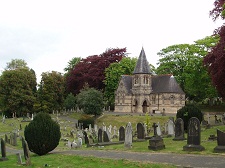
Gainsborough Cemetery
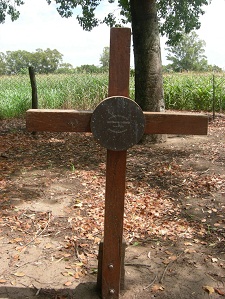
Benitz Family Cemetery
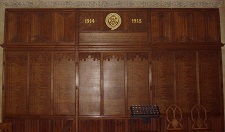
Malvern College |
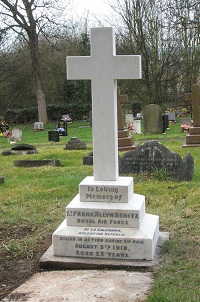
Headstone
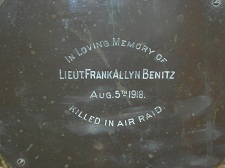
Benitz Family Cemetery
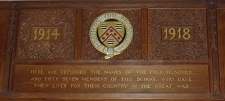
Malvern College More? Search on “Malvern College uk” or click: here for its website. |
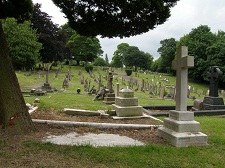
Gainsborough Cemetery

Gainsborough Cemetery
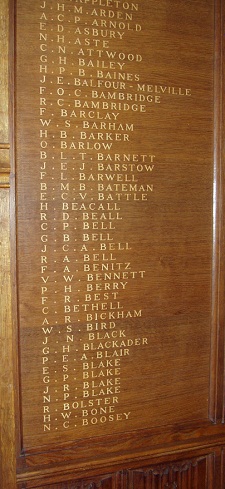
Malvern College |
Memorial Stadium, Univ. of Illinois
(Popular Mechanics magazine & University of Illinois)
Opened in 1922, the Holabird & Roche designed Memorial Stadium at the University
of Illinois, was dedicated to the 189 students, faculty and alumni who died in
World War I. The original construction was financed with donations from
University students, alumni, and others. Memorial colonnades, comprised of 200
individual columns, were designed to run the length of the east and west
façades. On 189 of these columns were inscribed the name of an alumni
serviceman, and one solitary woman, who died in the war. In addition, carved
stone panels were placed on the facility’s exterior to commemorate the war and
to honor athletic achievements. Frank A. Benitz is engraved on a pillar in
the north-east portico (circled in the photo below).
More? Search on “University of Illinois” or click here for its website.
Memorial Stadium, dedication - October 17, 1924:
Amongst the family papers preserved at estancia “La California” are letters sent by the University of
Illinois to William A. Benitz (Frank’s older brother, Willie) regarding the dedication ceremony for the
stadium.
The invitation to attend the ceremony most likely arrived at “La California” after
the ceremony had taken place — at that time, the mail traveled by ship between the States and the Argentine.
The following are selected pages from the Memorial Program received by Willie. We have omitted the speeches.
(Another tree:
Per family anecdote, Frank’s sisters also planted a tree in his memory at the
university.)
We thank Charles A. Benitz for allowing us the opportunity to copy these documents.
Ninety years later:
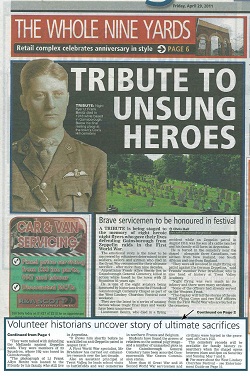
Frank in the news |
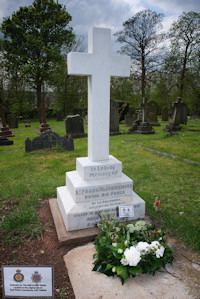
Headstone Restored |
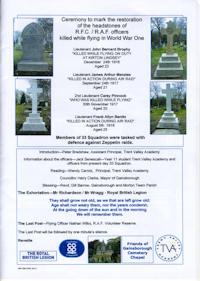
Headstone Restoration |
© Peter Benitz (Benitz Family)